WASHDAY WONDERS

Lighten Your Load by Exploring the Latest in Laundry Innovations
The hampers are overflowing, and there’s no more clean bath towels. It’s time for laundry. For many of us, laundry is one of the most laborious household chores (and probably why we put it off until we’re down to the last clean socks). But our ancestors would surely shake their heads if they could see how easy we have it today. With the turn of a dial or press of a button, machines can do the same work in an hour that would have taken them an entire day.
There have been many technological advancements in laundry, but since the 1950s, when automatic, electric machines became an essential home appliance, engineers have not stopped improving the design. They have shifted the focus from merely saving time to becoming more energy efficient, more sanitary and gentler on clothes. If you haven’t updated your laundry room in several years, you may be surprised at the options available today.
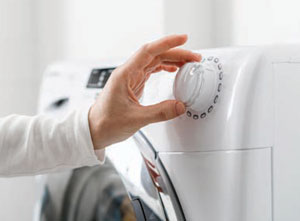 So many cycles
So many cycles
In the last 20 years, a few dials and buttons have evolved to cover a full panel of options. Even today’s basic low-budget machines have multiple wash cycles, allowing you to choose from bulky items to delicates and even down to the type of clothing, like jeans or active wear. If you’re in a hurry, you can choose a “quick wash.”
Once washing machines started running off computer controls 20 years ago, sensors could do more than just switch to the next cycle; now they can dispense fabric softeners at the proper time and gauge the size of a load to automatically fill to correct water levels. Some newer machines can even detect how damp your clothes are and will adjust the spin cycle to remove more water. You will also find models that have automatic detergent dispensers, so you add it in bulk and not before every load.
If you’re shopping for a new set, one of the biggest decisions you’ll have to make is whether you want front-loading or top-loading. While generally more expensive, the front-loaders are more modern and come with more features; top-loaders are your standard power washer. It all depends on what best meets your family’s needs and budget.
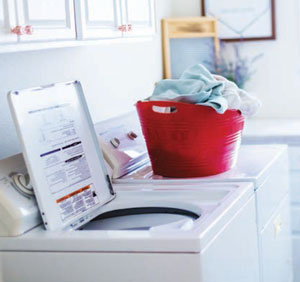 If shopping for top-loaders, you will notice that the parts differ. There are still models with an agitator (a center rod with blades that moves the clothes around while washing) but in the last 10 years, manufacturers have introduced the impeller — a disc at the bottom of the wash drum that rotates to create currents and evenly distribute clothes. With impellers, there’s obviously more room for clothes and less chance of items getting tangled, but because they create a gentler wash, some users say they don’t tackle stains as aggressively as agitators.
If shopping for top-loaders, you will notice that the parts differ. There are still models with an agitator (a center rod with blades that moves the clothes around while washing) but in the last 10 years, manufacturers have introduced the impeller — a disc at the bottom of the wash drum that rotates to create currents and evenly distribute clothes. With impellers, there’s obviously more room for clothes and less chance of items getting tangled, but because they create a gentler wash, some users say they don’t tackle stains as aggressively as agitators.
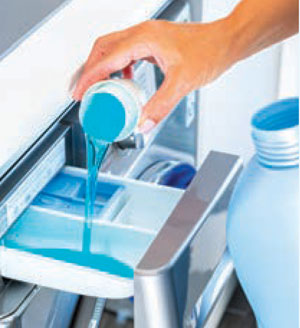
Super Suds: Detergent Options
The 1960s introduced liquid detergent, the 1970s brought biologically active enzymes (stain removers) and the 1990s ushered in anti-allergen washing powders. The latest forms of detergent are capsules (or pods) and sheets — concentrated detergent in pre-measured paper sheets that dissolve in the wash. Many sheets are on the market; you can search reviews, but pay attention to how many are needed for certain size loads and also how well they do against stains.
You may also be hearing a lot about scent booster beads. Not to be confused with fabric softeners, which do their job of softening your items and reducing static cling, these products are basically laundry perfumes. They add long-lasting fragrance and come in virtually any pleasant smell you can think of. But they may not be a good idea for family members with sensitive skin or allergies.
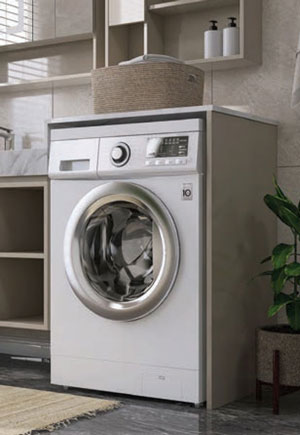 All in for all-in-ones?
All in for all-in-ones?
The concept of a washer/dryer combo in one machine has been around for several decades, but only in the last few years have products hit the market promising a high-tech, space-saving solution. Called a 2-in-1 or all-in-one, this machine can wash and dry the same load. There’s no more forgetting to switch over wet clothes that develop that familiar moldy smell. The wash function is similar to a front-loading washing machine, and the dryer can be ventless (lint is washed out through the drain pump hose; a filter can be regularly checked for buildup). The all-in-ones are on the pricier end, but reviews vary on their effectiveness. Many say if you have multiple loads to do, the old process actually still saves you time because you can wash and dry simultaneously. The new combo units also tend to have smaller capacities and are less efficient at drying.
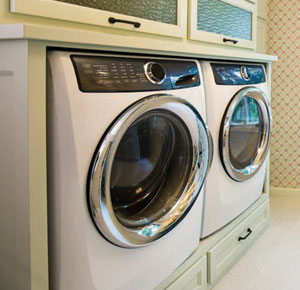 Some brands are now offering “dual washer” models with two washers in one unit, allowing you to wash separate loads at the same time; you can select different cycles and settings for each. Most of these models have an average-size washer with another mini washer designed mainly for delicates and lightly soiled items.
Some brands are now offering “dual washer” models with two washers in one unit, allowing you to wash separate loads at the same time; you can select different cycles and settings for each. Most of these models have an average-size washer with another mini washer designed mainly for delicates and lightly soiled items.
 Washboards to dashboards
Washboards to dashboards
Today’s washers and dryers can still beep when the load is complete, but built-in Wi-Fi now allows you to keep track of progress from wherever you are. The machines send an alert through an app when the load is ready. Or for the models with added features like automatic detergent dispensing, it can let you know when you need to add more. Some apps can allow you to remotely start or stop the machine and even pre-schedule a load.
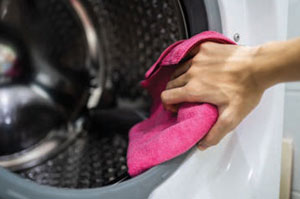 A cleaner cleaner
A cleaner cleaner
You would think washers are innately sanitary, but they need regular cleaning too. Advanced technology is preventing excessive moisture and odor; you may see terms like “Microban” or “OdorBlock.” Some machines use steam technology to heat your clothes to the safest levels that can kill most household bacteria and remove stains and allergens without having to use harsh chemicals. Some models have a trademarked Allergiene Cycle. (Check out asthmaandallergyfriendly.com for those certified by the Asthma and Allergy Foundation of America).
Eye on efficiency
High-efficiency (HE) washers remain popular, promising water conservation and subsequent energy savings. The HE label has been on machines since the 1990s, so that’s something to still look for today, as well as HE detergents specially formulated for the machines.
The future of washing machines could center on these factors, using very little water or even doing away with water altogether. Waterless machines, in testing phases now, use a scientific process that converts carbon dioxide from a natural gas to liquid and then back into gas or a process that uses polymers, like beads or pebbles, to remove dirt from fabrics.
 Full steam ahead
Full steam ahead
Today’s wrinkle-free fabrics have pushed the iron to the side. But when wrinkles are inevitable, more people are reaching for a steamer. While hot irons tend to flatten textile fibers, hot steam can allow fibers to resort to their natural state. The newer handheld steamers are popular because of their convenience (no need for an ironing board) and less liability (no more scorching clothes). Steamers, however, don’t create crisp pleats and may take longer on thicker fabrics than a traditional iron. For this reason, there are combo steamer and irons — the best of both worlds.
There may always be a pile of dirty laundry lingering in your home — and until the Jetsons’ Rosey the Robot becomes reality, there will always be folding and putting away. But there’s no argument on how far laundry innovation has come. With every cycle, we can be grateful for the engineers who have brought us into the 21st century with more efficient and dependable machines than ever before. ✦
Detergent, High-efficiency (HE), impeller, laundry, steamer, wash cycles, washer/dryer combo, Wi-Fi






